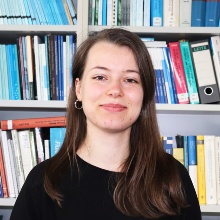Rebecca Kohlhaas, SFB 1313 doctoral researcher at the Department of Hydromechanics and Modelling of Hydrosystems (research project D03), will give her milestone presentation on "Uncertainty-aware surrogate-assisted Bayesian validation of coupled porous-media models" on 8 April 2025.
Date: Tuedsay, 8 April 2025
Time: 3:45 pm CEST
Title: "Uncertainty-aware surrogate-assisted Bayesian validation of coupled porous-media models"
Venue: Multi Media Lab (MML), U1.003, Pfaffenwaldring 61, 70569 Stuttgart, Campus Vaihingen. If you are interested to participate online in Rebecca Kohlhaas' milestone presentation, please contact Samaneh Vahid Dastjerdi to receice the Webex link >>> samaneh.vahiddastjerdi@mechbau.uni-stuttgart.de
Abstract
Model validation is a central component of ensuring the quality and usability of simulation models. To take into account the uncertainty inherent to experimental data and the simulation results, Bayesian methods for calibration and validation can be used, which often involve multiple evaluations of the predictive models. This can result in high computational costs, especially as the number of evaluations increases for more complex models. Bayesian validation becomes feasible for computationally expensive models with the approximation of model results by cheap-to-evaluate surrogate models. Our Bayesian validation framework, BayesValidRox, contains methods for both surrogate modeling and Bayesian analysis of models, including Bayesian validation, inference and model comparison.
Coupled models introduce an additional level of complexity to these tasks due to the interaction of their different components and typically increased computational costs. We identify two settings how our framework can be applied to coupled porous-media models, to replace one or more of the coupled models with a surrogate model, or to quantify the uncertainty of and validate coupled models. The main challenge for the deployment of surrogate models in a coupled setting lies in the reduced physical accuracy of the surrogate models, especially for little available training data. We tackle this task by including physical knowledge of the model behavior in physics-informed training methods for the surrogate models, focusing on the Polynomial Chaos Expansion (PCE), and show first results on an example setting. For the uncertainty quantification and validation of coupled models gaining an understanding of how the uncertainty propagates through the coupling is of vital importance. We consider a sequentially coupled model for calculating coupling coefficients, that is to be deployed in free-flow coupled to porous-medium flow validation settings, and discuss first ideas for tackling this increased complexity, specifically in relation to uncertainty propagation and sensitivity analysis.


